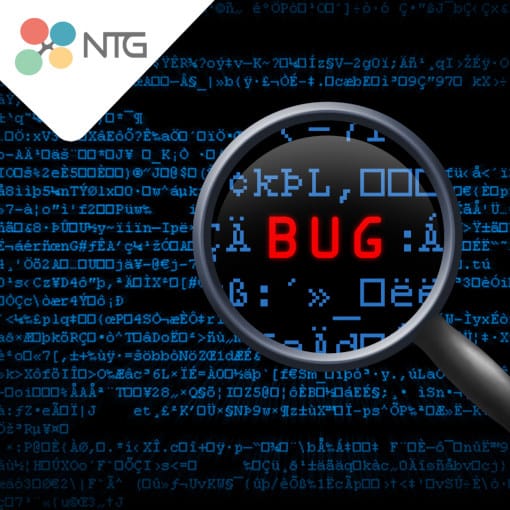The Covid-19 pandemic forced everyone and everything to go digital, even more so than we already were. Everything was taking place on the internet, from school to business meetings and transactions, even doctor consultations and everything in between. Remote working or hybrid work became a new normal.
Businesses and organizations increasingly started to store their data in the cloud, or other computing services, making the shift from the physical world to the digital world more manageable. However, it resulted in the rise of a new problem: increased vulnerability to cybersecurity threats.

What is cybersecurity vulnerability?
A cybersecurity vulnerability is a system of weak, if any, protection that leaves one susceptible to cyber-attacks. These are criminal acts that aim to steal data, harm data, or disrupt a digital network. Some examples of cybersecurity threats are malware, data breaches, Denial-of-Service (DoS) assaults, and other attack methods.
Similarly, cyber threats refer to the probability of a potential cyber-attack that seeks to acquire unauthorized access to a computer network, intellectual property, or any other kind of sensitive data by causing harm, disruption, or theft to the asset or data. Cyber risks might originate within an organization of trusted people, or they can originate from outlying regions from unknown actors. All businesses are vulnerable to cyberattacks, from Fortune 500 companies to small neighborhood shops. No company, no matter how big or small, is immune.
In addition to the widespread usage of technologies without understanding their risks, the rising interconnectedness of devices makes us more vulnerable to cyber-attacks. The vast majority of people are entirely unaware of the dangers the gadgets they employ may pose.
As a result, hackers have a greater chance of successfully attacking the layers of cybersecurity that rely on people, which are the weakest point in the cyber-security chain. Hackers are infiltrating such systems through the use of phishing, Trojans, ransomware, and other malware.
The ITRC (Identity Theft Resource Center) stated in its report that the number of breaches recorded in 2021, surpassed the total number of breaches reported in 2020. Proof that cybersecurity vulnerability is a continuing concern, and all organizations need to make it a priority to ensure their data security. IT teams and organizations must establish and maintain protective systems that are capable of detecting and removing common cybersecurity threats.
Attackers’ attempts, on the other hand, are evolving. Cyber-attackers change their tactics all the time. Data leak is the fastest-growing and most expensive consequence of cybercrime, and it is also the most common. Not only do cyber attackers copy and move your data, but they can also completely destroy or alter your information.
Cybercriminals are not only expanding their points of attack, but they’re also choosing new targets: More than 50% of all attacks now target small and midsize organizations. Attackers get in and get out undetected since many of these organizations currently store essential personal and financial information but lack professional IT teams and sturdy infrastructure.
Even though if these businesses place a high priority on security, they frequently overlook cybersecurity dangers that could cause significant damage.
Here are some frequently overlooked vulnerabilities, as well as what businesses may do to limit the risk.
1. Inadequate Encryption
Although mobile devices are particularly vulnerable to this issue, other devices such as laptops and computers that may be used from remote locations and not protected by a VPN (a virtual private network) or full-disk encryption can also be impacted.
It means that login details for emails, and passwords stored in online browsers, could all be stored in the same location on one of these devices, making them open to theft.
2. Public Networks
This vulnerability is connected to inadequate encryption. If your devices are not properly encrypted and you or any other member of your team use a public network, hackers might easily get access to your systems.
Public networks, whether on a laptop or a smartphone, are one of the most hazardous areas for anyone who has sensitive data in their possession. Given the propensity of public locations, cafes, and hotels to serve as gathering places, it is crucial to be aware of the dangers.
The employment of “sniffer” programs by hackers and cybercriminals is common practice to steal information transmitted via networks, which can include login credentials and sensitive correspondence.
3. Security Vulnerabilities That Haven’t Been Patched
While myriad new threats are being developed on a regular basis, a large number of businesses rely on outdated security flaws to function. With so much malware seeking to target mainly the same vulnerabilities over and over again, one of the most significant risks that a company can face is neglecting to fix those vulnerabilities as soon as they are found by a security researcher.
When an “update available” notification appears in specific programs, it is all too usual for a company or organization, even individuals, to ignore it because they don’t want to lose a few minutes of work time that it would take to execute the update.
The majority of people find updating to be a hassle. The nuisance is that it might save a company tremendous amounts of money and time and lost revenue in the long run if it is handled properly.
Maintaining a schedule for regular updates a day of the week on which your IT staff checks for the most recent security patches or fixes for your organization’s software and makes sure that they are applied to all company’s systems is a simple solution.
4. Misconfigurations of the Firewall
According to recent research, misconfigurations of network firewalls are responsible for 99% of all network firewall breaches. It is possible to make mistakes when configuring firewalls, ranging from forgetting to include a single character in their parameters to failing to examine the log outputs for security devices thoroughly.
No matter what mistake is made when configuring a firewall, the result is often the same: the network is left vulnerable to traffic that can bypass your firewall.
5. Protection of Email and Browser
Phishing emails are responsible for more than 60% of all cyber-attacks on a daily basis. Attackers use email to trick you into handing over your personal information thinking you’re getting, say, free points for signing up for a rewards program at a store that you frequent, or entering your credentials to log back in to an account that was mysteriously “locked.” They use this strategy to obtain your usernames, passwords, bank account numbers, and other sensitive information.
As soon as they get this information, they may be able to gain access to your bank account, email, and other online services and platforms. In a single day, hackers send out millions of phishing emails.
6. “Malvertisements”
Infected internet advertisements are referred to as “malvertisement” or malware advertisements. These advertisements may even appear on reputable websites and social networking sites. In the event that a user clicks on a malicious advertisement, the user’s system is infected with malware. Cybercriminals can simply spread malware through the use of malicious advertisements.
Cyber attackers can transmit malware and/or redirect visitors to malicious websites by exploiting faults in the distribution of advertisements, such as flaws in third-party ad servers or vulnerabilities in the redirection of advertisements to genuine sites.
7. Asset Management
If you don’t have an accurate, up-to-date, and complete IT infrastructure inventory, you’ve opened the door to a breach because you don’t know which systems/networks have been left vulnerable.
Asset management software (AMS) is one of the essential components of any organization’s infrastructure. These tools are used to keep track of and evaluate the performance of your hardware and software components.
8. Internet of Things (IoT) Connection
It is possible to connect devices (laptops, phones, etc.), sensors, and monitoring systems to streamline operations through the use of the IoT. However, this same interconnectedness produces a larger attack surface, which gives malevolent actors a more significant number of ports of entry and compromise.
9. Third-Party Assessment
The majority of businesses rely on third-party service providers for their hardware and software needs. Cybersecurity breaches are becoming more common in specific IT infrastructure components. These third-party providers are to blame for the data breaches.
Businesses should evaluate the contract, procedures, and security policies of third-party vendors and the security mechanisms of their managed IT infrastructure, software, and services.
10. Multiple Cloud Networks
Cybersecurity threats become a bigger problem as businesses extend into different cloud networks. Because there are more devices and apps, there is less visibility, which enhances the likelihood of a successful attack. Finding a good cybersecurity services provider to create and execute a customized plan for your business is the best way to secure and keep track of your networks.
Final Thoughts
With the advancement of technology and the transition to a fully digital workplace, it is impossible to ignore the importance of cybersecurity. Organizations must increase visibility to maximize protection and keep one step ahead of potential attacks. Vulnerability best practices can assist teams in identifying previously unknown cybersecurity risks.

